Using figures of speech to teach students of Chinese as a second language
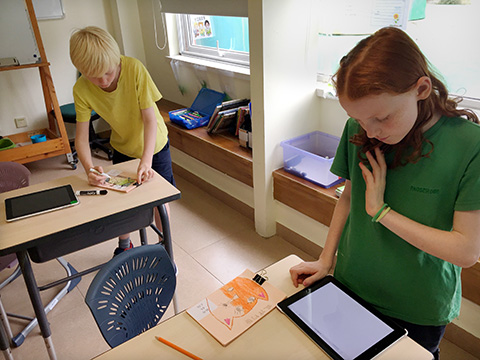
Figures of speech are an important literary device. For students of Chinese as a second language, similies are both easy and difficult. The easy part for students is they can understand the relationship between the subject and object. The difficult part is the inner connection: The deeper comparsion of the two is hard to explain to students with language. For example, the big bubble is like ___ of _____. The bubble itself is round; students can picture this in their minds. Yet they also need consider the adjective 'big' and then match it to the ___ of ____. It requires painstaking effort to explain this to students with words alone, and they may not fully understand. When practicing figures of speech with my students, my way to ensure they understand is to use some illustrations. This allows studentrs to use their imagination fully to express ____ of ____ like _____ of ______, as seen in the following pictures:
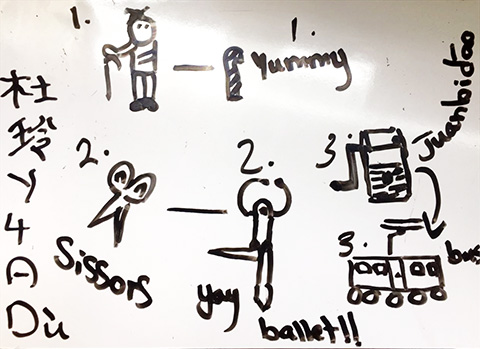
Billie: Upside down scissors are like people doing ballet.
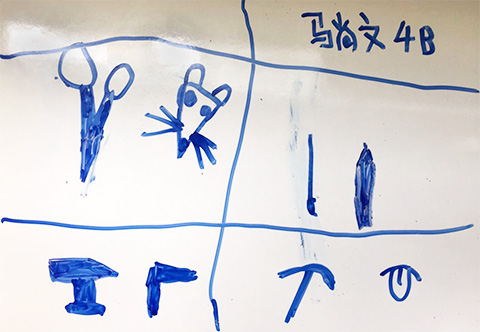
Will: Upside down scissors are like the head of mice.
In class students use illustrations to help them express figures of speech. They are happy to draw the pictures and practice. We will soon use this method to write a poem called 'Blow the Bubbles which will include illustrations. You can see how rich the students' imaginations are.
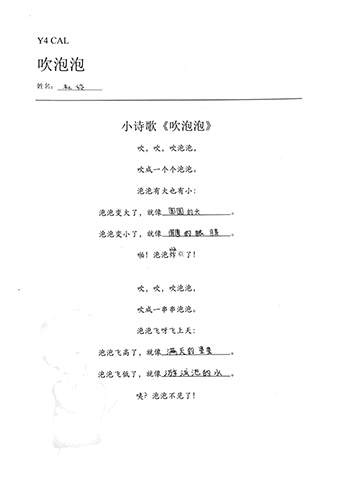
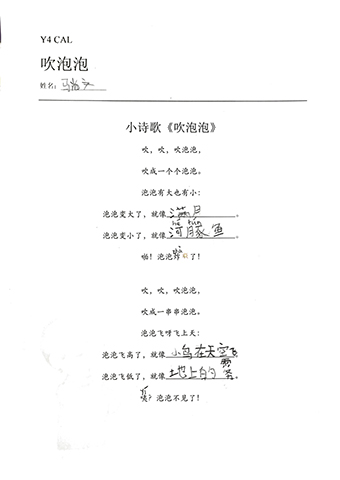
By CAL Coordinator: Lily Jin